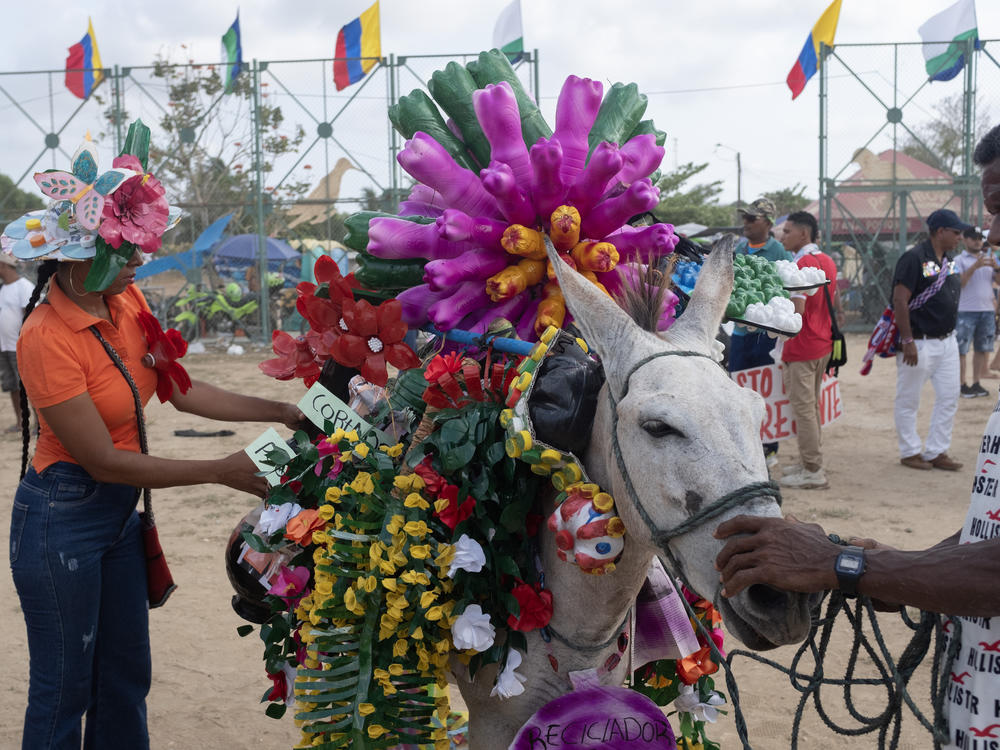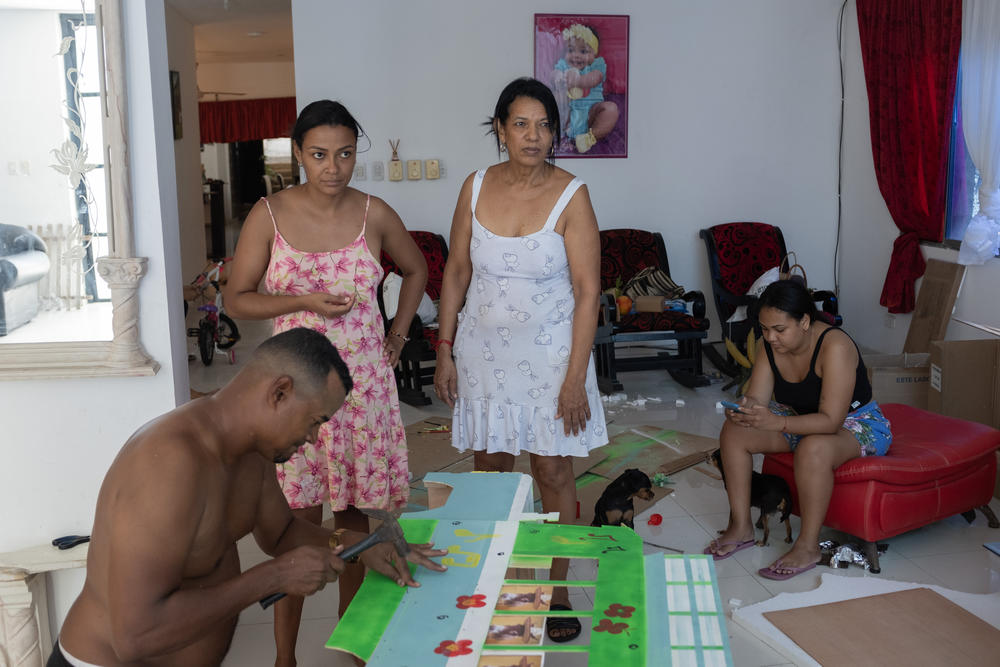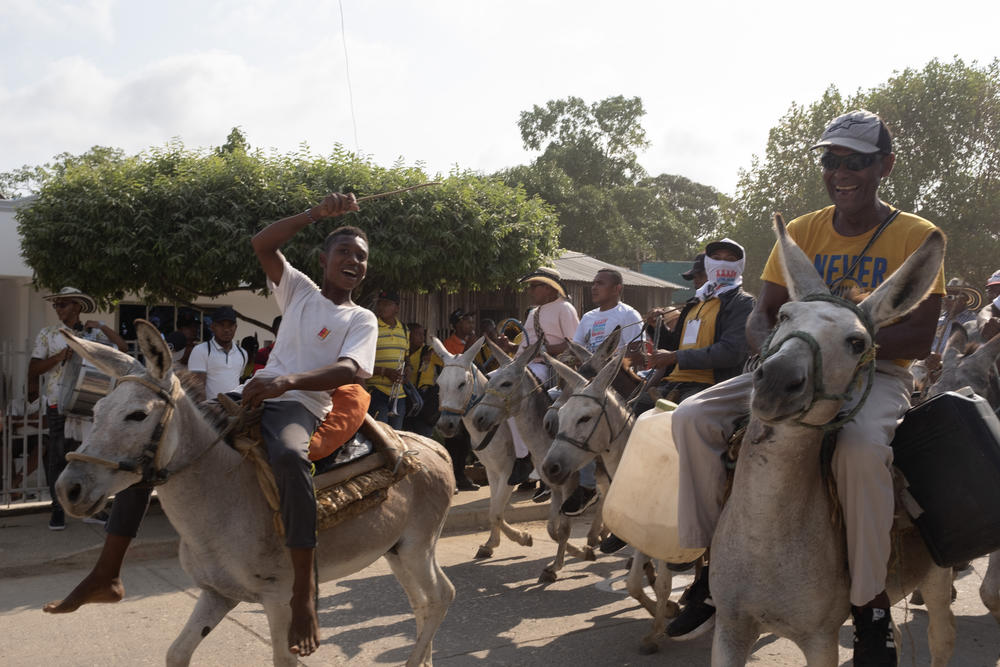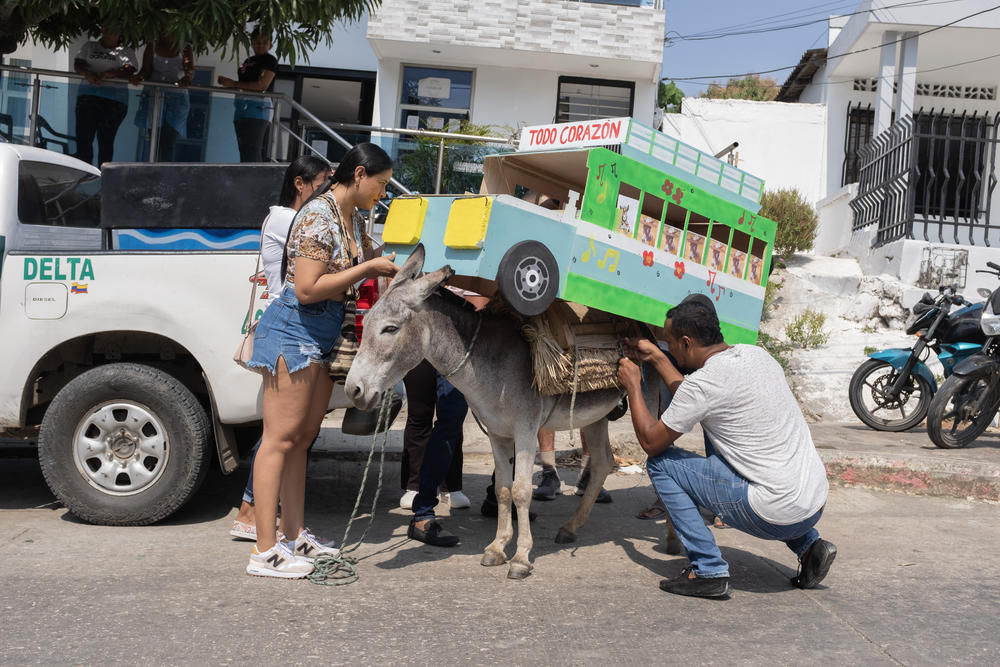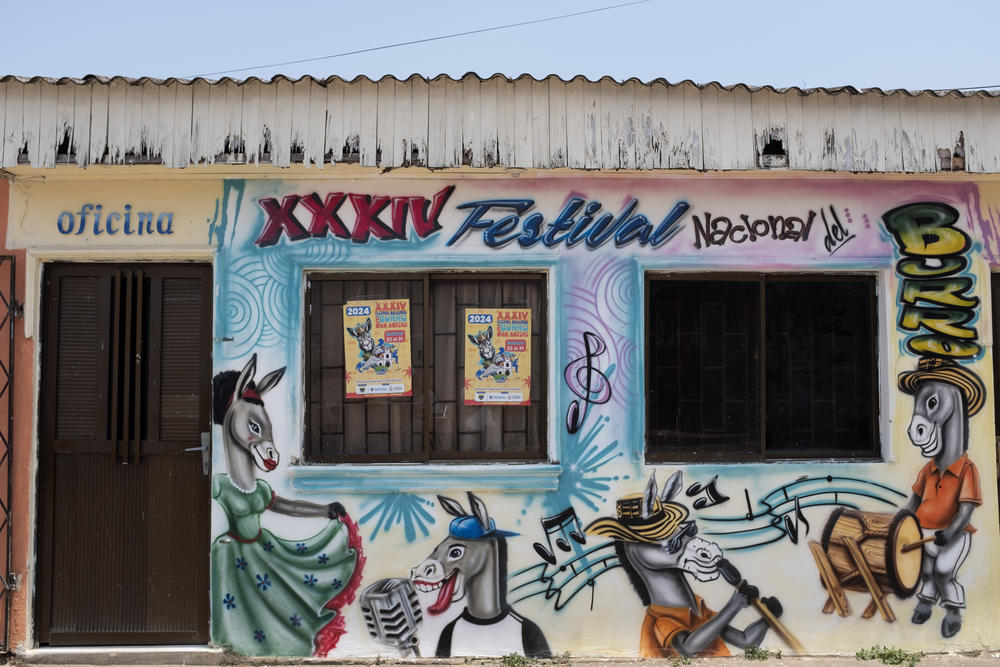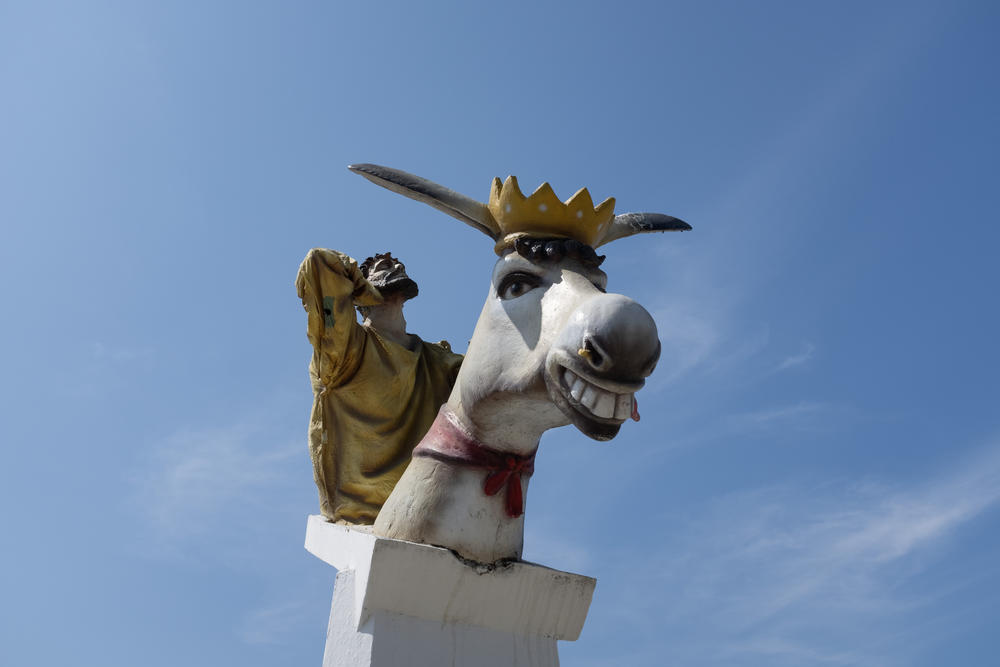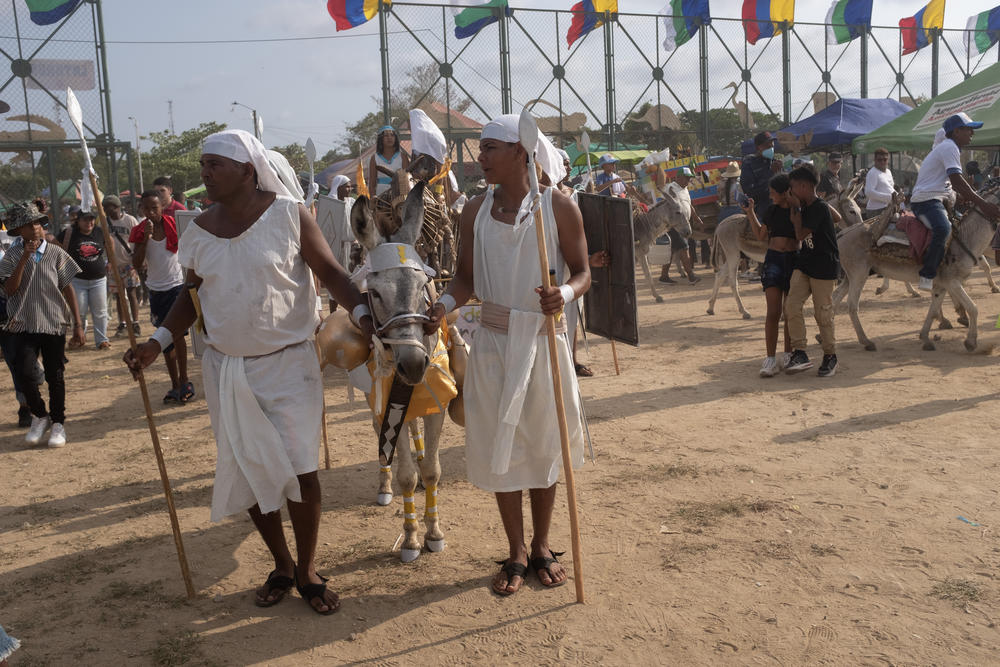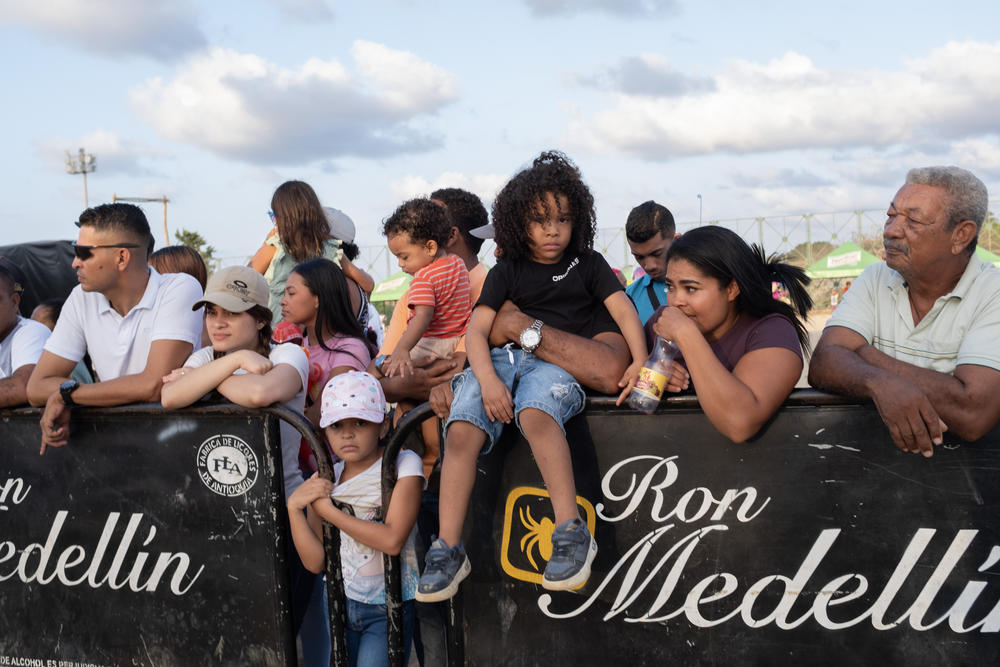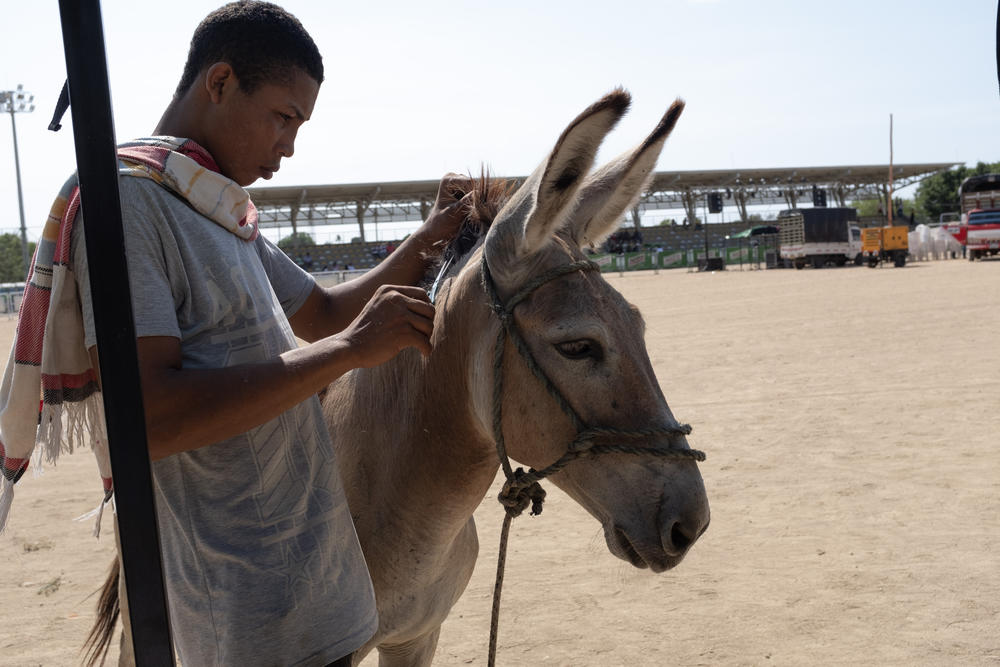Section Branding
Header Content
Donkeys take center stage at an annual festival in Colombia
Primary Content
SAN ANTERO, Colombia — Colombians are proud of their culture — and their quirks. That's why the country holds annual festivals celebrating everything from coffee, flowers and a local version of the Jeep, to kites, crabs and corn cakes.
But the country's most unusual ritual pays tribute to the humble donkey.
The Festival del Burro, or Donkey Festival, is a seven-day extravaganza in the Caribbean coast town of San Antero during Easter. It's a mix of music, booze and burros adorned in outrageous costumes.
At the most recent celebration last month, some of the donkeys were dressed up as corrupt politicians and local celebrities. Another was wearing shoes and socks on its hooves as well as lipstick, eye shadow and earrings, topped off with a flower in its mane.
At one point, their owners paraded hundreds of the pack animals through the streets of San Antero as bands played marching music and residents, sitting on lawn chairs and drinking beer and rum, cheered for the most outlandish costumes.
"San Antero is the land of donkeys," gushed Eno Garcés, as he prepared his burro to compete in the festival's beauty pageant.
All this rowdiness began a century ago in San Antero as a solemn Easter procession. It involved a single donkey carrying an effigy of Judas Iscariot, which was then burned in the town plaza for betraying Jesus, says Eustorgio Díaz, one of the organizers of the festival this year.
Eventually, the event turned into an homage to the donkey itself. Throughout Latin America, they serve as surefooted beasts of burden for farmers who can't afford trucks or motorcycles to haul crops and supplies.
"They carry our plantains. They carry our yuca," Garcés says. "Donkeys are our vehicles."
Another farmer, Leonardo Macía, adds: "They are like your kids. You love them."
Colombians even wax poetic about donkeys, which sometimes appeared in the novels of Nobel literature laureate Gabriel García Márquez.
Díaz, the festival organizer, pulls out a sheet of paper and reads aloud one of his own poems, written from the point of view of a burro that feels underappreciated.
"You only give orders that I must follow," the donkey complains to his master in one of the verses. "Why can't you be nicer?"
Roman Catholic church officials have sometimes complained that the raucous, alcohol-fueled fiesta makes a mockery of Holy Week. In 1999, Msgr. Ramón Molina, bishop of the nearby provincial capital of Montería, scolded the mayors of several towns for taking part in the Donkey Festival rather than church services, and demanded that the date of the event should be changed. He was ignored.
Díaz claims there's a spiritual connection, pointing out that donkeys sometimes show up in the Gospels, as when Jesus entered Jerusalem to celebrate Passover. "He didn't ride on a horse or a camel," Díaz says. "He took a donkey."
Another reason to call attention to these animals is a looming shortage.
Industrialization and the mechanization of farming reduced demand for donkeys and led to a large decline in the animal's population in certain parts of the world during the 20th century.
Animal rights organizations say the world's remaining burro herds are now under threat from China, where collagen from their hides is turned into a gelatin substance called ejiao, used as a traditional medicine and in beauty products.
According to the U.K.-based Donkey Sanctuary, 5.9 million burros, mostly from Africa, Asia and Latin America, are slaughtered every year for China's ejiao industry.
Colombian government agencies did not respond to NPR's requests for data on the country's donkey population. However, a 2021 investigation by InSight Crime, a research center focused on organized crime in the Americas, found that the trafficking of donkey skins on the Caribbean coast was thriving.
To help raise the animals' numbers, Colombian scientist Juan David Montoya is working on a project to artificially inseminate female burros, known as jennies. Due to their reproductive physiology, the success rate is extremely low, he says, but he emphasizes it's important to boost Colombia's donkey population.
"Colombian agriculture is mechanized in flat areas, but many small farms are built on mountain slopes that are too steep for farm machinery," he says. "You have to use traditional methods, and that means donkeys."
Indeed, when San Antero's Donkey Festival kicks off, legions of farmers ride into town on their trusty burros after long days in the fields. They compete for cash prizes in events that range from a "bucking-donkey" contest to a braying competition in which owners imitate the sounds of their animals.
There's also a pageant to name the best-looking burro. Owners spend hours clipping their donkey's manes, trimming their elongated ears and brushing their coats before leading them across a dirt track in front of hundreds of spectators.
All this may seem a little over-the-top.
But because they are such hard workers, the farmers of San Antero insist that even donkeys deserve their day. Or, in the case of the Donkey Festival, an entire week.

